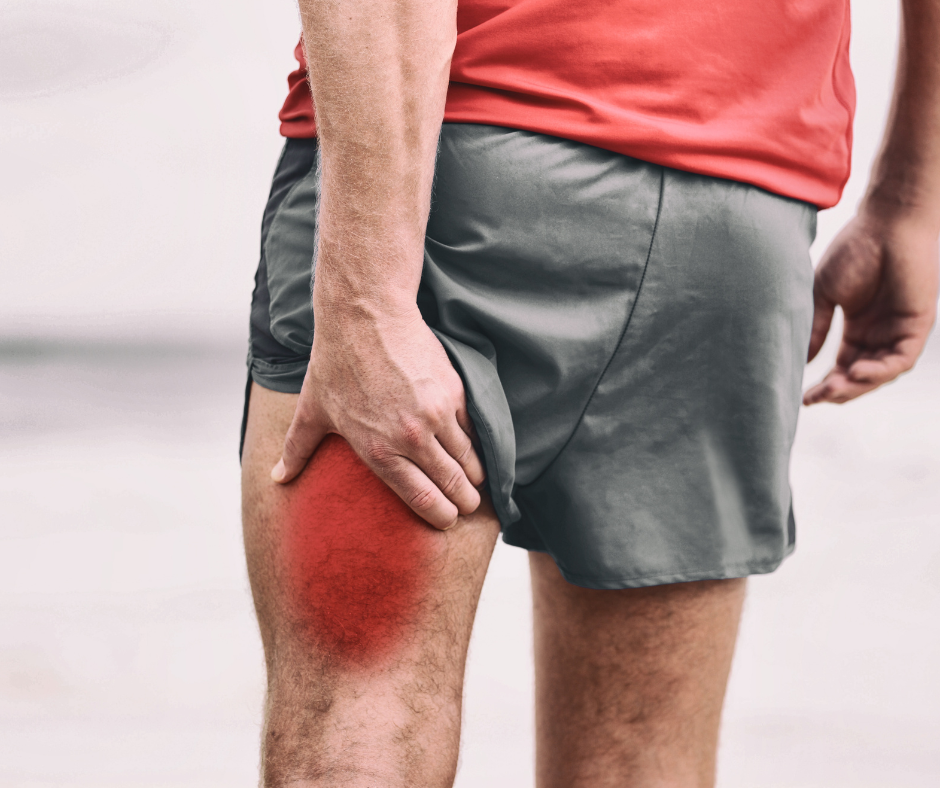Hamstring tendinopathy, a common affliction among runners, can be debilitating if left untreated. Its impact on performance and overall well-being cannot be overstated. In this comprehensive guide, we delve into the depths of this condition, exploring its symptoms, diagnosis, and cutting-edge treatment options including dry needling, focused shockwave therapy, and targeted rehabilitation exercises.
Understanding Hamstring Tendinopathy:
Hamstring tendinopathy refers to the degeneration or inflammation of the hamstring tendons, which are thick bands of tissue connecting the hamstring muscles to the pelvis, knee, and lower leg bones. Runners, particularly those engaged in high-intensity or long-distance running, are at a heightened risk of developing this condition due to repetitive strain and overuse.

Symptoms:
- Pain and Tenderness: Persistent pain and tenderness along the back of the thigh, especially during running, walking, or bending.
- Stiffness: Restricted range of motion in the hip or knee joint.
- Swelling: Localized swelling around the hamstring area.
- Weakness: Reduced strength and power during activities that engage the hamstring muscles.
- Pain with Stretching: Discomfort or worsening pain when stretching the hamstring muscles.
Diagnosis:
Diagnosing hamstring tendinopathy typically involves a thorough assessment by a healthcare professional, which may include:
- Medical History: Detailed discussion of symptoms, exercise routines, and previous injuries.
- Physical Examination: Palpation of the affected area to identify tenderness, swelling, or abnormalities.
- Imaging Studies: MRI or ultrasound scans to visualize the extent of tendon damage or inflammation.
Treatment Options:
- Dry Needling:
- Mechanism: Dry needling involves the insertion of thin needles into trigger points or tight bands within the affected muscles.
- Benefits: It promotes muscle relaxation, increases blood flow, and stimulates the body’s natural healing response.
- Procedure: A trained therapist inserts sterile needles into specific points along the hamstring muscles, targeting areas of tension or dysfunction.
- Frequency: Treatment frequency may vary depending on the severity of symptoms, typically ranging from weekly to bi-weekly sessions.
- Focused Shockwave Therapy:
- Mechanism: Focused shockwave therapy delivers high-energy acoustic waves to the affected tendon, stimulating tissue regeneration and reducing pain.
- Benefits: It accelerates healing, breaks down scar tissue, and improves tendon function.
- Procedure: During the procedure, a specialized device delivers shockwaves directly to the site of tendon injury under the guidance of ultrasound imaging.
- Treatment Course: A typical course of treatment consists of several sessions spaced over a few weeks, with each session lasting approximately 15-20 minutes.
- Rehabilitation Exercises:
- Stretching: Gentle stretching exercises help improve flexibility and reduce muscle tightness. Examples include seated hamstring stretches and standing toe touches.
- Strengthening: Targeted strengthening exercises aim to rebuild muscle strength and endurance. Eccentric exercises, such as Nordic hamstring curls, are particularly effective.
- Functional Training: Incorporating functional movements, such as lunges and squats, into the rehabilitation program can enhance muscle coordination and stability.
- Gradual Progression: Rehabilitation should progress gradually, starting with low-intensity exercises and gradually increasing the intensity and complexity as tolerated.
Hamstring tendinopathy poses a significant challenge for runners, but with the right approach, recovery is possible. By combining advanced treatment modalities such as dry needling and focused shockwave therapy with targeted rehabilitation exercises, runners can expedite their journey back to peak performance. Remember, early intervention and comprehensive care are key to overcoming this formidable adversary and reclaiming the fast track to success.

Recent Comments